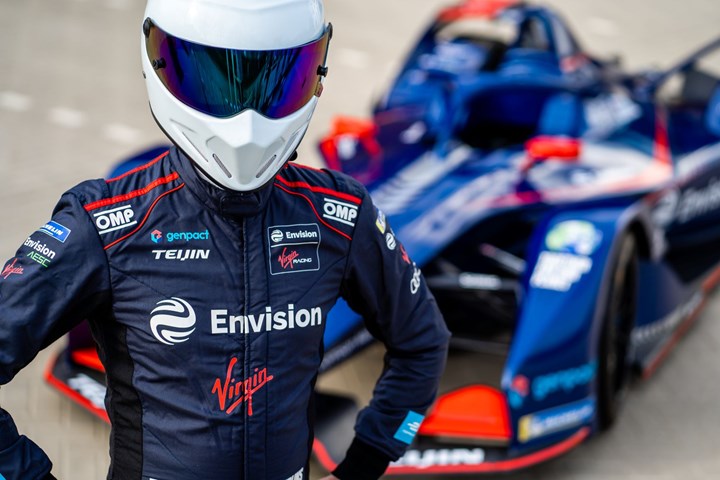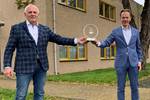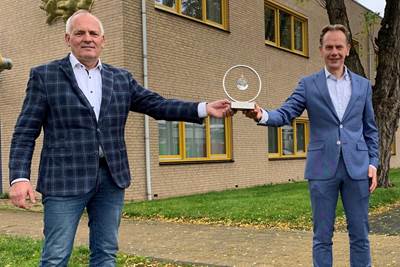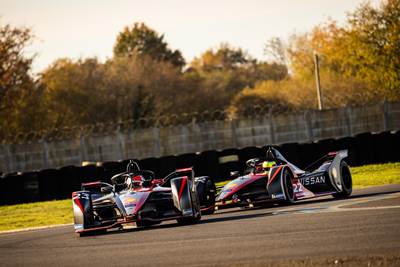Teijin Aramid, OMP Racing composite Formula E racing suit raises the bar for protective performance
Ultra-light meta-aramid fiber garment maximizes both the safety and comfort of the Envision Virgin Racing Formula E team, harnessing flameproof, flexible and high-performance qualities.

Photo Credit: Teijin Aramid BV
Aramid fiber producer Teijin Aramid BV (Arnhem, Netherlands) has helped engineer a new protective motor racing suit that will be worn for the first time at the Berlin Formula E ‘E-Prix’ on Aug. 14, an annual race of the single-seater, electrically powered Formula E championship. According to the company, the ultra-light suit harnesses the protective qualities of Teijinconex neo, a high heat-resistant and dyeable meta-aramid fiber, to provide professional racing drivers with outstanding levels of comfort, protection and safety. Teijin Aramid claims that this is the world's first use of Teijinconex neo for professional motor racing.
“This innovative lightweight racing suit shows how effective research and development collaborations can enable dynamic breakthroughs in protective clothing,” says Daisuke Ozaki, director of research & technology at Teijin Aramid. “Our close partnership with OMP has brought together the technologies and innovative capabilities of both companies. Together, we are harnessing the high-performance properties of our aramids to drive safety and performance in professional motor racing.”
The professional racing suit is the latest product to emerge from Teijin Aramid’s longstanding collaboration with OMP Racing (Genoa, Italy), a premium motorsport safety equipment producer. The new suit has been custom-made for Envision Virgin Racing Formula E Team (EVR), one of 12 teams competing in the Formula E World Championship, and will be worn by Envision Virgin Racing Formula E Team drivers Robin Frijns and Nick Cassidy. Like OMP Racing, Teijin Aramid says it has close links to Envision Virgin Racing Formula E Team, with Teijin Group beginning a multi-year sponsorship contract with the Formula E team in 2020.
The suit contains innovative features designed to maximize both the safety and comfort of drivers during competition. The outer layer of the garment consists of an ultra-light fabric made with Teijinconex fibers. In addition to being flameproof, Teijinconex resists temperatures of up to 400°C (750°F) and does not burn or melt when exposed to extreme heat. Because of these superior protective qualities, the suit contains just two layers, one less than most standard racing suits. This allows the wearer greater flexibility and a more tailored, comfortable fit. The suit is also up to 10% lighter than the previous racing wear worn by the Envision Virgin Racing Formula E Team, further enabling the movement and performance of drivers.
Teijinconex neo, a new type of meta-aramid developed in 2015, also offers excellent dyeability as well as the original Teijinconex properties Teijin Aramid says, enabling Envision Virgin Racing Formula E Team to explore vibrant colors and designs for its suits. Furthermore, because the material is produced in line with leading chemical industry environmental standards, including REACH, it aligns with the Formula E team’s strong sustainability ethos, including Envision Virgin Racing Formula E Team’s campaign.
“By incorporating Teijinconex neo aramid fibers into the suit design, we are putting down a marker for comfort, lightness, flexibility and color options in protective racing wear,” notes Otto Pomiano, research & development consultant at OMP. “This innovative design will hopefully help Envision Virgin Racing’s drivers reach new levels of performance on the track. But, of course, our top priority remains driver safety, and the new suit has been rigorously tested in line with Fédération Internationale de l'Automobile [FIA] standards.”
Related Content
Low-cost, efficient CFRP anisogrid lattice structures
CIRA uses patented parallel winding, dry fiber, silicone tooling and resin infusion to cut labor for lightweight, heavily loaded space applications.
Read MorePlant tour: Airbus, Illescas, Spain
Airbus’ Illescas facility, featuring highly automated composites processes for the A350 lower wing cover and one-piece Section 19 fuselage barrels, works toward production ramp-ups and next-generation aircraft.
Read MoreCutting 100 pounds, certification time for the X-59 nose cone
Swift Engineering used HyperX software to remove 100 pounds from 38-foot graphite/epoxy cored nose cone for X-59 supersonic aircraft.
Read MoreCarbon fiber, bionic design achieve peak performance in race-ready production vehicle
Porsche worked with Action Composites to design and manufacture an innovative carbon fiber safety cage option to lightweight one of its series race vehicles, built in a one-shot compression molding process.
Read MoreRead Next
Teijin Aramid program produces bio-based, high-performance aramid fibers
The 2018 pilot program, in partnership with BioBTW, successfully produces Twaron yarn from bio-based aromatic materials without altering the material properties.
Read MoreDuPont, Nissan e.dams Formula E team partner for advanced automotive electrification
Technical partnership will act as a testbed to explore and accelerate new technologies for safer, more advanced electric vehicles in motorsport, and for future commercial applications.
Read MoreCeramic matrix composites: Faster, cheaper, higher temperature
New players proliferate, increasing CMC materials and manufacturing capacity, novel processes and automation to meet demand for higher part volumes and performance.
Read More












